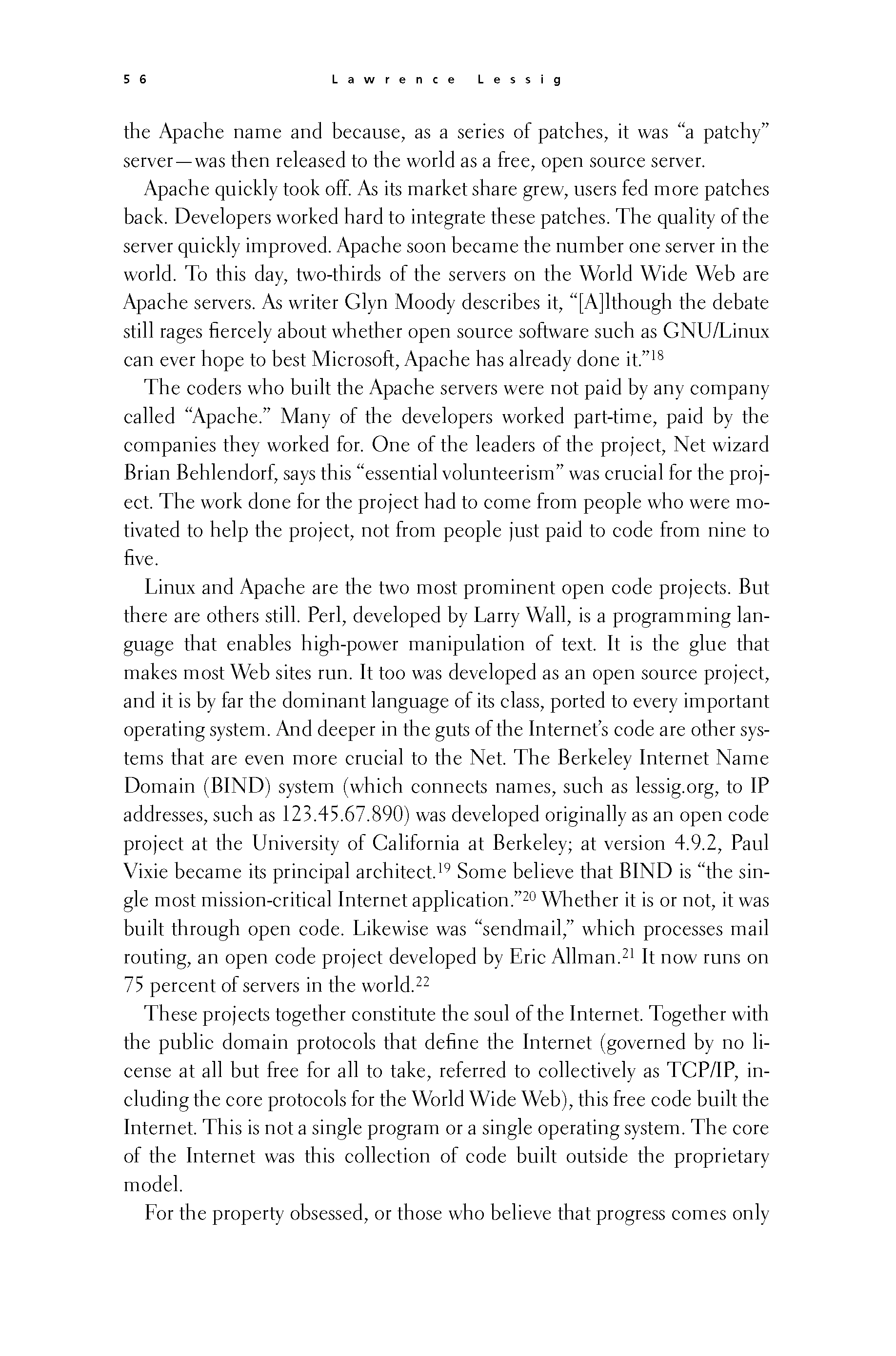 p055 _
-chap- _
toc-1 _
p056w _
toc-2 _
+chap+ _
p057
p055 _
-chap- _
toc-1 _
p056w _
toc-2 _
+chap+ _
p057
the Apache name and because, as a series of patches, it was "a patchy"
server -- was then released to the world as a free, open source server.
Apache quickly took off. As its market share grew, users fed more patches
back. Developers worked hard to integrate these patches. The quality of the
server quickly improved. Apache soon became the number one server in the
world. To this day, two-thirds of the servers on the World Wide Web are
Apache servers. As writer Glyn Moody describes it, "[A]lthough the debate
still rages fiercely about whether open source software such as GNU/Linux
can ever hope to best Microsoft, Apache has already done it."[4-18]
The coders who built the Apache servers were not paid by any company
called "Apache." Many of the developers worked part-time, paid by the
companies they worked for. One of the leaders of the project, Net wizard
Brian Behlendorf, says this "essential volunteerism" was crucial for the proj-
ect. The work done for the project had to come from people who were mo-
tivated to help the project, not from people just paid to code from nine to
five.
Linux and Apache are the two most prominent open code projects. But
there are others still. Perl, developed by Larry Wall, is a programming lan-
guage that enables high-power manipulation of text. It is the glue that
makes most Web sites run. It too was developed as an open source project,
and it is by far the dominant language of its class, ported to every important
operating system. And deeper in the guts of the Internet's code are other sys-
tems that are even more crucial to the Net. The Berkeley Internet Name
Domain (BIND) system (which connects names, such as lessig.org, to IP
addresses, such as 123.45.67.890) was developed originally as an open code
project at the University of California at Berkeley; at version 4.9.2, Paul
Vixie became its principal architect.[4-19] Some believe that BIND is "the sin-
gle most mission-critical Internet application."[4-20] Whether it is or not, it was
built through open code. Likewise was "sendmail," which processes mail
routing, an open code project developed by Eric Allman.[4-21] It now runs on
75 percent of servers in the world.[4-22]
These projects together constitute the soul of the Internet. Together with
the public domain protocols that define the Internet (governed by no li-
cense at all but free for all to take, referred to collectively as TCP/IP, in-
cluding the core protocols for the World Wide Web), this free code built the
Internet. This is not a single program or a single operating system. The core
of the Internet was this collection of code built outside the proprietary
model.
For the property obsessed, or those who believe that progress comes only
[[56]]
p055 _
-chap- _
toc-1 _
p056w _
toc-2 _
+chap+ _
p057